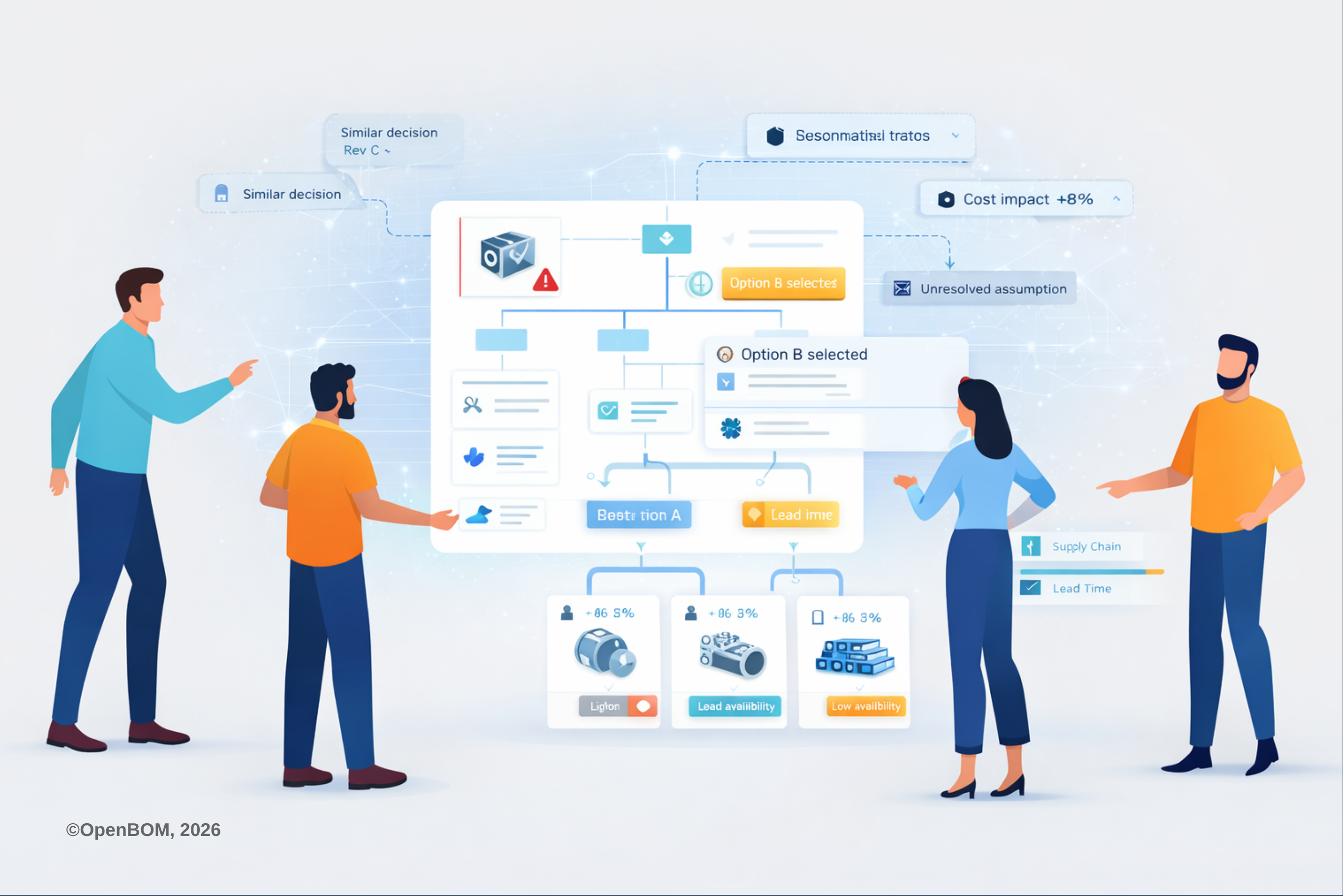
It’s been more than a year since the pandemic that had whole countries shutting down knocked on our door.
While the pandemic is slowly but surely improving day by day we cannot ignore the long-term impact that it will have on our day-to-day lives as well as the way we do business.
It’s funny how certain situations can bring about different results. This pandemic has been awful for many but beneficial for some. Some industries suddenly stopped while others experienced an unbelievable surge in the demand and fluctuation of their supply chain networks.
As more industries and teams have been forced into working remotely, the demand for collaboration has skyrocketed.
Let’s be honest, manufacturing companies and engineering environments are far from being ready to work remotely. The majority of CAD design work is still done using files and desktop CAD systems, the amount of Excel files that people are sending downstream to their colleagues, managers, supervisors, suppliers, and contractors is astonishing and to get lost in this environment is super easy. In addition to that, getting files in the context of updated design information is another challenge.
There is one thing that is certain after more than 12 months of this pandemic. These months became a watershed moment to put focus on digital transformation and remote collaboration. All cloud technologies and SaaS trends accelerated. The priority changed and we can see a global consensus on the importance of global collaboration and the need to have engineering and PLM technologies to support it.
I’d like to summarize what we’ve learned and heard from our customers for the last year to conclude how OpenBOM technologies helped to accelerate remote collaboration and real-time information sharing and availability.
Cash is King, but Data is Queen
With enough money, you can buy pretty much anything in this world. But here’s the thing… money can be wasted dramatically if you don’t have the correct information at your fingertips.
Having CAD files locked away in a desktop, wrong Excel spreadsheets sent over to contractors, and wrong orders made have always been an issue. But the amount of problems since the pandemic hit has accelerated at such a fast pace that we had zero chance to pivot.
What was nice to have quickly became a must-have immediately. And it was impossible because of some technological and logistical concerns such as first priority overnight.
What changed is company cloud strategies. According to Gartner, the cloud infrastructure is changing faster than ever. Here is a very interesting data point – the proportion of enterprise workloads deployed in the cloud will double in the near future (from 20% in 2020 to more than 40% by 2023). In other words, staying competitive means moving to the cloud.
As enterprise infrastructures evolve and shift in today’s digital-first world, infrastructure and operations (I&O) leaders need to prioritize adapting and protecting on their to-do lists. IT leaders need to formulate a cohesive cloud strategy that is expansive and forward-looking to fully reap the business value of cloud
Cloud is the only way to give you access to the data you need. Learn how OpenBOM helps customers to collaborate and also check examples of how OpenBOM seamlessly connected to CAD environment helps customers to make all their information available online remotely.
The Need for Speed
Engineers, contractors, and suppliers need data right here and right now. There is a very low level tolerating information availability and there is a huge need to make this information, including real-time updates seamless and up to speed. To stay on the same BOM is a mantra we keep hearing from the customers.
Learn how OpenBOM customers are escaping from Spreadsheet Madness, by capturing data and making it available in real-time immediately. It is not only about how to get the data but also how to make all derivative functions (eg. calculations and analysis).
The number one pain point for SolidWorks is using Excel and spreadsheets to manage your parts and BOMs. The pain starts from creating your original BOM, sharing with other people that need to consume the information (eg. procurement), and keeping it in sync between all members of your team, contractors, and suppliers. These Excels (or even Google Spreadsheets) are a mess and a source of confusion and mistakes.
Calculations are another source of a royal pain. Think about rolling up a cost for an assembly or even worse, trying to figure out how many parts you have in a few assemblies together. As you work downstream you’re cloning these Excel spreadsheets and you never know which one has the latest updated cost and description.
Single Vendor Environment Is Overrated
The tug-of-war between multiple big suites of software is a reality of many companies. Companies were shifted towards single-vendor solutions because they are easy to deploy and manage. Also, the integration is much easier for these big vertical software suites. It was true until cloud and SaaS options became readily available. Customers can get on a SaaS software within minutes, SaaS is always updated and the integration is much easier thanks to modern REST API and online integrations. The trend towards combined online services is growing and you can see many examples of these solutions – Slack, Workday, Salesforce and many others. Read more about integrations and possibilities to organize digitally connected workflows.
Check the set of OpenBOM videos for SOLIDWORKS to learn more about how users can start using OpenBOM in just under 5 minutes and get OpenBOM integrated with other product suites.
In this video, you can see step-by-step instructions on how to start using OpenBOM Add-in for SOLIDWORKS in just under five minutes (!). This is all you need to start with – to create an OpenBOM account, to download SOLIDWORKS add-in, configure settings, and create a perfect BOM to count parts, calculate the cost and prepare purchase orders.
Conclusion
Our 14 months with Covid has shown us a dramatic change in the acceptance of customers to use online cloud services, operate in remote environments, and integrate with other solutions.
The current shift is a clear opportunity to make the change that manufacturing companies were waiting for. It is a catalyst for teams to improve and to work together more effectively and collaboratively. But it will only happen if companies adopt the new technologies and accept the changes.
Here are my top three lessons learned:
- Focus on data availability and ditch all old-fashioned ways to access data (in silos, Excels, and practically anything that will lock data in the local computers.). Integrate data downstream- bring your disconnected contractors and suppliers together and enable wider spread data analysis.
- Zoom, Google Meet, Microsoft Teams are good, but to put the team on the same “BOM” or data set is the most important. Without the right data, all remote collaboration tools are pointless.
- Check the opportunities to work with modern online SaaS services as a better option to lock the company in a single vertically integrated software vendor. SaaS services have better integration and can be easier to use.
Pushing forward after this pandemic, we need to be agile, fast and data-oriented in order to work in this new digital environment.
If you’re interested in trying OpenBOM out for yourself click here for your free 14 day trial!
Best, Oleg
Join our newsletter to receive a weekly portion of news, articles, and tips about OpenBOM and our community.









